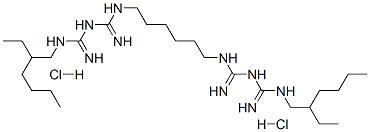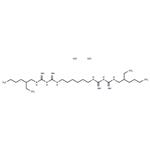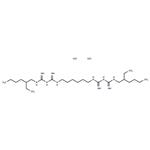White Powder with Light Yellow Cast
Alexidine dihydrochloride has been used:
- as an antiseptic to study its antimicrobial activity in saliva-derived microcosm biofilms
- as a protein tyrosine phosphatase localized to the mitochondrion 1 (PTPMT1)-specific inhibitor to study its effects on spare respiratory capacity and viability of CD8+ T cells
- as a PTPMT1 inhibitor to study its antiviral effect on ?human cytomegalovirus?(HCMV) replication in HCMV-infected human foreskin fibroblast (HFF) cells
Has antibacterial, antiplaque properties against Streptococcus mutans, Actinomyces ciscosus, and Actinomyces naesludii.
selective inhibitor of protein tyrosine phosphatases localized to mitochondrion 1 (ptpmt1) (ic50 = 1.08 μm in vitro). stimulates increased insulin secretion by β-cells in rat pancreatic islets. displays antitcancer properties in fadu cells.
Alexidine dihydrochloride is a bisbiguanide compound. It has been studied in the treatment of head and neck cancer. Alexidine dihydrochloride also exhibits antibiofilm and antifungal activity against several fungal species. It causes mitochondrial apoptosis in mammalian cells due to its anti-cancer activity. Alexidine dihydrochloride is a component of oral disinfectant and contact lens solution.


